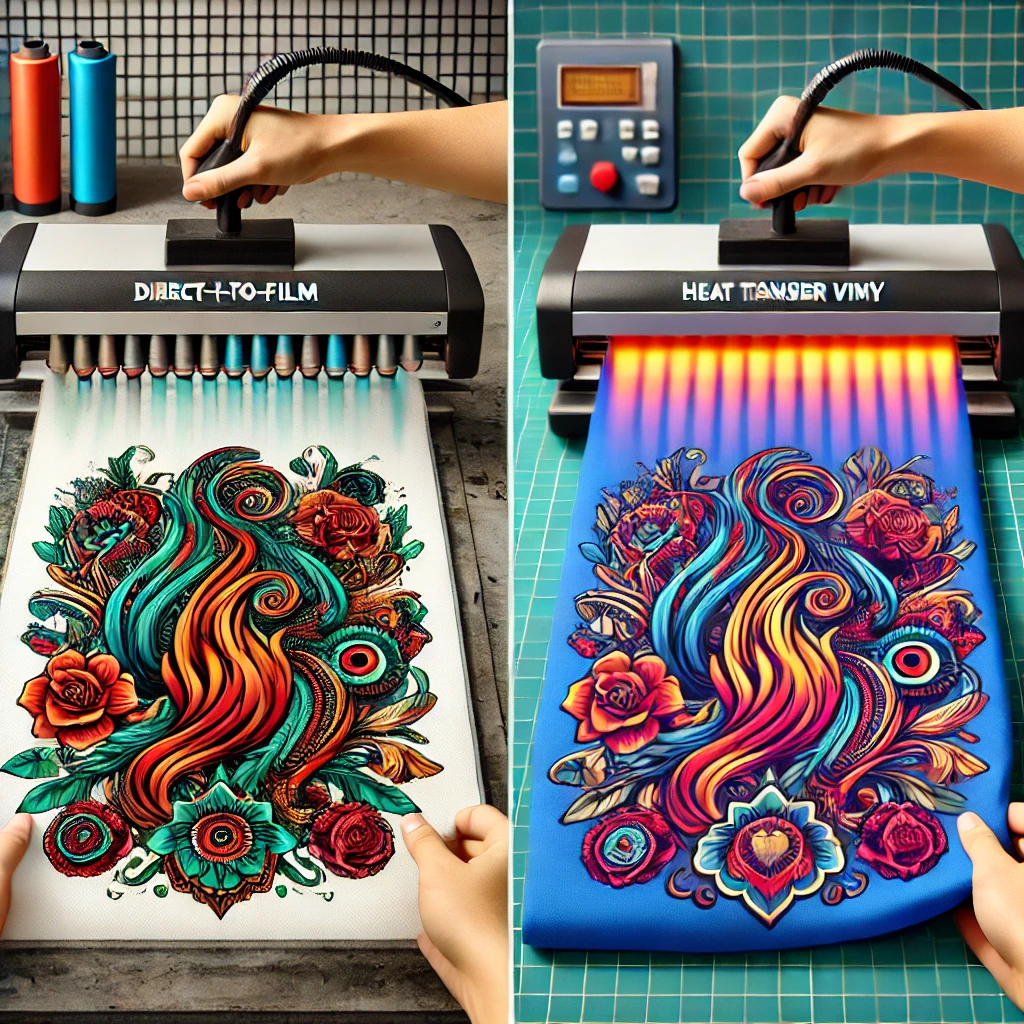
When it comes to custom apparel printing, both DTF (Direct-to-Film) and Heat Transfer Vinyl (HTV) offer unique advantages, but they differ significantly in their processes and applications.
Heat Transfer Vinyl (HTV) involves cutting designs from colored vinyl sheets, which are then applied to fabric using heat. HTV is perfect for simple, bold designs, especially those with single colors or basic shapes. It’s a popular choice for creating custom t-shirts, sports jerseys, and other apparel with text or logos.
DTF Printing, on the other hand, allows for more complex and detailed designs. It involves printing the design onto a special film, applying adhesive, and then transferring it onto the fabric using a heat press. DTF can handle intricate details, gradients, and vibrant colors, making it ideal for custom apparel with more elaborate designs. It also works well on a wide range of fabrics, including polyester, cotton, and blends.
Which One to Choose?
If your project requires simple, solid designs or text, HTV may be the better option due to its durability and ease of use. However, if you’re looking for more detailed, colorful designs with a professional finish, DTF offers greater versatility and visual appeal.
At 312Print, we offer both DTF and HTV services to cater to your specific needs. Whether you’re creating custom apparel for a sports team, a business, or personal use, our expert team is here to help you choose the best method for your project.
